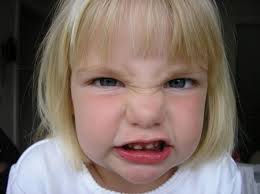AGGRESSIVE CHILD

Sponsored Link
The parents do not want to understand that aggressive child denotes herself/himself by being aggressive because parents do not want to see that they are the reason of this problem.
Aggressive child express herself/himself by actions instead of words. Many times even s/he does not know what s/he wants to tell. Not only children sometimes teenagers and adults behave like this. Child who destroys school’s tools want to give the message of s/he is angry. The hidden message without words under her/his action is’ there is something in my life which is problem for me. I feel my self bad. Be aware of me and help me.’
The society and parents call these children as disobedient, bearish and aggressive. They either want to stay away from child or give useless punishments to child. Nobody wants them. People always talk abut the behaviours of the child and they want to revise her/his actions. Instead of dealing with the feelings of children adults try to put the child in a certain behaviour structure. Critics and advices strengthen the negative behaviours of the child. Parents do not want to understand that the child shows the problem or the pain inside her/him like this because they do not want to accept that the problem is caused by themselves.
Most of the parents can not confess that they behave their children in wrong way. How many parents say ‘my child behaves in a bad way because he does not feel well’ instead of ‘I did not give the necessary attention to my child. I answered his/her normal reactions with anger’ Children only behave in a good way by not injuring others only if s/he trust on her/his parents and if they do not injure him/her. Child’s self confidence should be developped. The idea of ‘I must not injure anybody’ develops only if s/he thinks that nobody injures her/him. Anger and violence is feelings of children and adults. The important thing is to balance these feelings with empathy.
How can we act to aggressive child?
– Try to understand the reasons of her/his behaviours. Listen. Be emphatic. But put limits to him/her.
– Do not punish. Use motivation techniques. Promote. ( ‘ Today, you did not hit your friends for this reason you played well with them today.)
– Put limits. Show options with limits because limitless strengthens the feelings of distrust.
– Control your reactions Be calm.
-Tell what you want to say clearly
– Wordless communication is important. Your behaviours should support your words.
– Share time to your child. Teach her/him using emotions instead of actions. Tell the results of his/her actions without commenting.
– Support him/her for developing his/her emotional ideas. Help him/her for mentioning his/her emotions.
– Accept anger as normal feeling of human being. The child must learn all emotions but express the feelings in positive way.
– Listen your child even if s/he is angry. Do not admonish. Tell your feeling without blaming him/her.Use ‘I’ language instead of ‘you’ language.
– Develop thinking skills of your child. S/he can give suggestions for solutions.
-Give chance for his/her faults.
– Do not have rigid rules or do not be behave absolutely free to your child.
– Solve problems to teach her/him how to solve problems.
– Find activities for your child to waste her/his energy.
– Discover the needs of your children and give possibilities to your child to meet her/his needs.
-Use common language against child with adults around him/her.
– Use tender relationship with your child.
-Take attention of your child. Use games for this.





